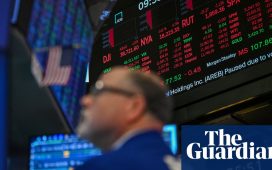New sectors covered will be cement, aluminum and iron and steel
China to export 868.94 million mt of CBAM-covered commodities to EU over 2026-40: S&P Global
Spread between China vs EU ETS prices expected to remain wide
China is likely to accelerate the expansion of its national compliance emission trading scheme or ETS in the next 2-3 years to cover sectors eligible under the EU’s cross-border adjustment mechanism or CBAM, mainly cement, aluminum and iron and steel, according to exchange officials and market participants.
Not registered?
Receive daily email alerts, subscriber notes & personalize your experience.
While the inclusion of some of these sectors was already in the pipeline, the recent approval of CBAM regulations by Europe has added a sense of urgency.
The trend also underscores how increasingly global and interconnected carbon regulations are expected to drive the design of local carbon market policies in several countries, laying the foundation for the cross-border trading of credits and offsets as envisioned under the Article 6.
The new sectors will further expand China’s ETS, which currently covers only the power sector and is already the world’s largest by volume of emissions covered at over 4 billion mtCO2e/year. The expansion comes after a stagnant year when the decarbonization agenda was in limbo due to COVID restrictions, energy security concerns and power sector losses amid soaring fuel prices.
“We will facilitate non-ferrous metals and building materials to be enrolled into the national ETS as soon as possible,” Lai Xiaoming, chairman of the Shanghai Environment and Energy Exchange or SEEE, said at China’s first Carbon Finance Forum conference held in Shanghai this April. SEEE is the exchange that hosts the trading platform of China’s national ETS.
Besides aluminum and cement, iron and steel are also likely to be among the next batch of ETS participants, impacted by CBAM, the EU’s carbon tariff on emission-intensive imports, Luyue Tan, Senior Carbon Analyst at Refinitiv, said at the Carbon Forward Asia 2023 conference in Singapore in early May.
The pace of sector enrollment depends on two factors – the progress of CBAM and China’s economic outlook, Neo Lin, Co-founder and CEO of Beijing-based carbon project developer QYH, said at the conference.
The power generation sector, the first and only industry covered by China ETS so far, accounts for about 40% of the nation’s total emissions, iron and steel account for 15.2%, building materials account for 13.2%, and non-ferrous metals account for another 1.2%, industry data showed.
Carbon traders expect the ETS expansion to take place within the next two years, facilitated by pilot carbon markets set up since 2013 at the provincial level, where the target industries have already conducted emissions data collection and reporting to prepare for a national-level rollout.
Heavy tariffs
EU’s CBAM will target the cement, iron and steel, aluminum, fertilizers, electricity and hydrogen sectors for which importers will start reporting emissions from October and start paying for them from 2026, at a price mirroring the EU ETS.
China is among the exporting countries that will be heavily impacted by CBAM as the cost-competitiveness of its products, especially iron and steel, will be hit.
From 2026 to 2040, China is expected to export 868.94 million mt of commodities that fall into the current CBAM scope, 42% of which is iron and steel, 8% is cement and 6% is aluminum, Michael Evans, senior carbon market analyst with S&P Global Commodity Insights, said citing forecasts from S&P Global Market Intelligence’s Global Trade Atlas.
This translates into 201.47 million mtCO2e of total embedded emissions to be charged under the CBAM, 85% from iron and steel, 6% from cement and 4% from aluminum, according to Global Trade Atlas data.
The tariff per mt of embedded emissions will be charged based on the difference between the carbon price in EU ETS and the price paid in the exporting country’s ETS or domestic carbon tax scheme.
On May 5, one emission allowance in EU ETS was priced at Eur 84.96/mtCO2e ($93.69/mtCO2e), and in China ETS at Yuan 55.50/mtCO2e ($8.03/mtCO2e), S&P Global and official exchange data showed.
These sectors are expected to face high carbon tariffs under CBAM, considering the huge price gap between the two ETS schemes, even after they pay for the domestic carbon price under China’s ETS expansion.
This has raised concerns over carbon price parity across international borders, and how factors such as domestic market conditions, exchange rate fluctuations and the true cost of carbon emission abatement need to be evaluated when cross-border carbon tax policies are formulated.
For example, pushing up domestic carbon prices has significant economic, social and political consequences for most countries. China’s government officials have criticized CBAM on several occasions, including at COP27, calling it a green trade barrier that imposes unfair costs on developing countries.
The CBAM-covered emission-intensive industries are also pillars of economic development and a high carbon cost will hinder their growth. China produces over 50% of the world’s cement and steel, and EU is just one of its many overseas markets.
Meanwhile, carbon market participants are looking forward to more liquidity and trading activity from the ETS expansion.
“We need professionals in the secondary markets to be able to open accounts and trade…Every single new market launched in China almost always happen this way — there’s always some barriers of entry at the beginning, but gradually it starts to open. I don’t have crystal ball in terms of when it will open [to non-compliance entities],” Tony Gai, Head of Environmental Product Trading Asia with Freepoint Commodities, said at the Carbon Forward Asia forum.










